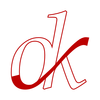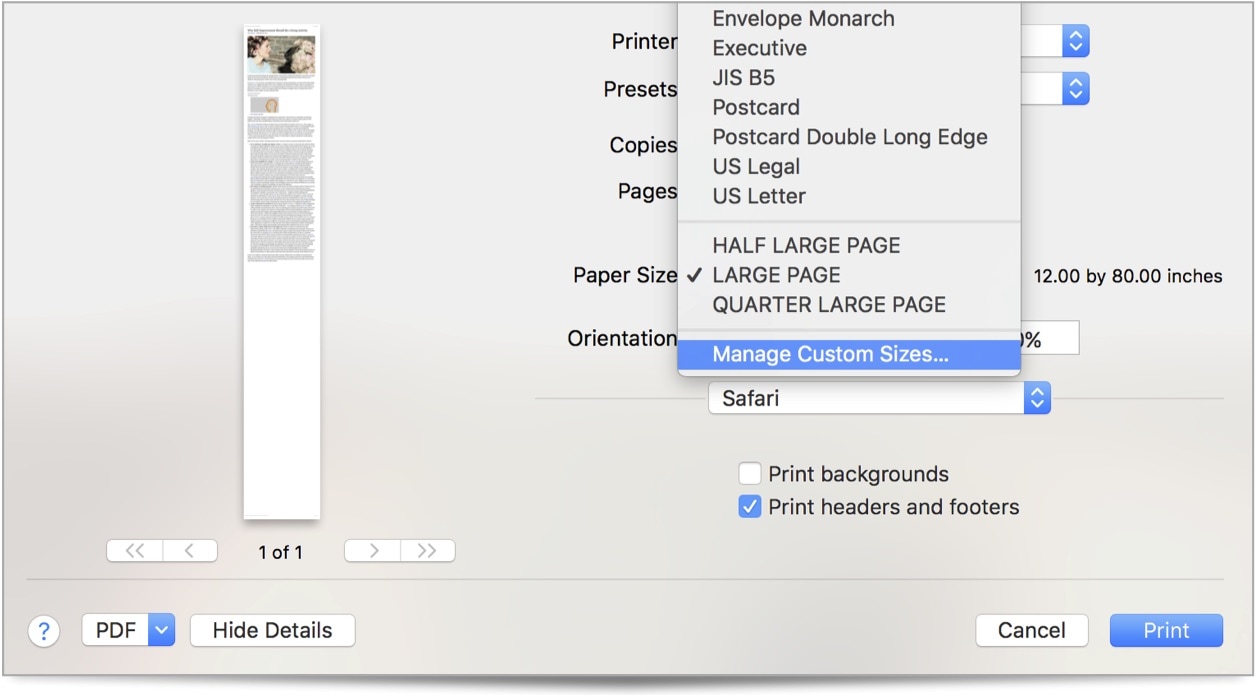|
PDFSpeech can be configured as a target to receive PDFs that are printed from any app on macOS. When we print as PDF, we don't usually pause to consider what the print output should look like. The below figure shows a web page being printed from Safari. The default view will require 21 pages in the PDF. By switching to Reader mode in Safari, we get a cleaner view of the web page will extraneous elements removed, and the page count is reduced to 19 pages. However, in the last example, the page size has been reduced to 4 pages by specifying a custom page size, in this case a page size of 12 inch x 80 inch (width x height.) Since we don't intend to print these PDFs on actual paper, using such virtual paper sizes is entirely driven by whether or not the PDF looks good & functions great in the PDF reading apps we use. Benefits of Long Pages: PDFSpeech highlights sentences as it reads them, and long pages allow the highlighting to proceed smoothly down the page. The default page sizes such as Letter and A4 when used for printing to PDF can often lead to text content separated from the figures due to page breaks. Overall, readability is significantly improved by using long pages. Indeed, I use three custom page sizes for printing PDFs into PDFSpeech, depending on how much content is to be printed on a page since long pages will have lots of whitespace if the content is insufficient:
Custom Paper Sizes can be selected in the Paper Size dropdown in the Print dialog. And in this dropdown, you can also create new custom paper sizes. In this example, looking at the page preview on the left, the content can likely be fit on the Half Large page preset. In this way, you can choose a paper size for the content that both looks neat & works great in the PDFSpeech app.
2 Comments
Leave a Reply. |
Archives
March 2021
Categories
All
|



 RSS Feed
RSS Feed